Ampro 486E P/N 5001561 Revision A User manual
- Category
- Motherboards
- Type
- User manual
This manual is also suitable for

Little Board™/486
e
Computer
P/N 5001561 Revision A
4757 Hellyer Avenue, San Jose, CA 95138
Phone: 408 360-0200, FAX: 408 360-0222, Web: www.ampro.com

ii
TRADEMARKS
The Ampro logo is a registered trademark, and Ampro, CoreModule, Little Board, StackPlane, MiniModule, and
MiniBackplane are trademarks of Ampro Computers, Inc. All other marks are the property of their respective companies.
NOTICE
No part of this document may be reproduced, transmitted, transcribed, stored in a retrieval system, or translated into any
language or computer language, in any form or by any means, electronic, mechanical, magnetic, optical, chemical, manual,
or otherwise, without prior written permission from Ampro Computers, Incorporated.
DISCLAIMER
Ampro Computers, Incorporated makes no representations or warranties with respect to the contents of this manual or of the
associated Ampro products, and specifically disclaims any implied warranties of merchantability or fitness for any
particular purpose. Ampro shall under no circumstances be liable for incidental or consequential damages or related
expenses resulting from the use of this product, even if it has been notified of the possibility of such damages. Ampro
reserves the right to revise this publication from time to time without obligation to notify any person of such revisions. If
errors are found, please contact Ampro at the address listed on the title page of this document.
REVISION HISTORY
Revision Reason for Change Date
1 Initial Release 2/00
A Production Release 7/00
© 2000, AMPRO COMPUTERS, INCORPORATED
© 2000, AMPRO COMPUTERS, INCORPORATED© 2000, AMPRO COMPUTERS, INCORPORATED
© 2000, AMPRO COMPUTERS, INCORPORATED

iii
Table of Contents
Preface
Introduction ........................................................................................................................................ vii
Technical Support............................................................................................................................... vii
Introduction
General Description...........................................................................................................................1–1
Features.............................................................................................................................................1–1
CPU/Motherboard........................................................................................................................1–1
VL-Bus Flat Panel/CRT Display Controller................................................................................1–2
Enhanced Embedded-PC BIOS....................................................................................................1–2
Serial Ports..................................................................................................................................1–3
Enhanced Parallel Port................................................................................................................1–3
Floppy Interface...........................................................................................................................1–3
IDE Interface ...............................................................................................................................1–3
Compact Flash Disk.....................................................................................................................1–3
Ethernet LAN Interface...............................................................................................................1–4
Byte-Wide Socket and Solid State Disk (SSD)............................................................................1–4
Modular PC/104 Expansion Bus..................................................................................................1–5
Enhanced Reliability .........................................................................................................................1–5
HALT Testing ....................................................................................................................................1–6
Software.............................................................................................................................................1–7
Little Board Development Platform ..................................................................................................1–8
Product Reference
Overview............................................................................................................................................2–1
Interface Connector Summary.....................................................................................................2–1
Jumper Configuration Options....................................................................................................2–4
System I/O Map ...........................................................................................................................2–4
DC Power ...........................................................................................................................................2–6
Power Requirements....................................................................................................................2–7
Backup Battery............................................................................................................................2–7
Cooling Requirements..................................................................................................................2–7
Powerfail Monitor........................................................................................................................2–8
DRAM.................................................................................................................................................2–9
System Memory Map ...................................................................................................................2–9
Expanded Memory and Extended Memory ...............................................................................2–10
Serial Ports (J11, J13).....................................................................................................................2–11
RS-232C Serial Ports.................................................................................................................2–11
RS-485 Serial Port.....................................................................................................................2–11

iv
I/O Addresses.............................................................................................................................2–11
Interrupt Assignments ..............................................................................................................2–12
ROM-BIOS Installation of the Serial Ports...............................................................................2–13
Serial Port Connectors (J11, J13)..............................................................................................2–13
Configuring Serial 2 for RS-485 (J6, W5, W6) ..........................................................................2–15
RS-485 Twisted-Pair Cabling Using RJ11 Connectors .............................................................2–16
Using the RS-485 Interface .......................................................................................................2–17
Serial Console............................................................................................................................2–18
Serial Booting and Serial Programming ...................................................................................2–20
Using a Serial Modem................................................................................................................2–20
Bi-Directional Parallel Port.............................................................................................................2–21
I/O Addresses.............................................................................................................................2–21
ROM-BIOS Installation of Parallel Ports..................................................................................2–22
Standard and General Purpose I/O Operation..........................................................................2–22
Parallel Port Interrupt ..............................................................................................................2–23
Parallel Port Connector (J15)....................................................................................................2–25
Floppy Disk Interface ......................................................................................................................2–27
Floppy Drive Considerations.....................................................................................................2–27
Floppy Interface Configuration .................................................................................................2–28
Floppy Interface Connector (J14)..............................................................................................2–28
IDE Hard Disk Interface .................................................................................................................2–29
IDE Connector (J12)..................................................................................................................2–29
IDE Interface Configuration......................................................................................................2–31
Compact Flash Solid-State Disk................................................................................................2–32
Flat Panel/CRT Video Controller ....................................................................................................2–33
Connecting a CRT (J5)...............................................................................................................2–33
Connecting a Flat Panel (J3).....................................................................................................2–35
Selecting Vee Polarity................................................................................................................2–39
Attaching an External Contrast Control...................................................................................2–40
Ethernet Network Interface ............................................................................................................2–42
Network Terms ..........................................................................................................................2–42
Installing an Ethernet Boot PROM...........................................................................................2–43
Twisted Pair Interface (J7)........................................................................................................2–44
Twisted-Pair Installations.........................................................................................................2–44
Using Network Operating Systems (NOS)................................................................................2–45
Network OS Drivers...................................................................................................................2–46
Controlling the Ethernet LAN Interface Directly.....................................................................2–46
Manufacturer’s Ethernet ID......................................................................................................2–47
Byte-Wide Socket (S0) .....................................................................................................................2–48
Addressing the Byte-wide Socket..............................................................................................2–49
Solid State Disk (SSD) Drives...................................................................................................2–50
Accessing the Byte-Wide Socket................................................................................................2–50
Jumpering the Byte-Wide Socket..............................................................................................2–52
Byte-Wide Socket Signals..........................................................................................................2–52
Using EPROMs..........................................................................................................................2–53
FLASH EPROM Programming..................................................................................................2–53
Using SRAMs.............................................................................................................................2–54
Non-volatile RAM ......................................................................................................................2–54

v
Utility Connector (J16)....................................................................................................................2–55
PC Speaker.................................................................................................................................2–57
LED Connection.........................................................................................................................2–57
Push Button Reset Connection..................................................................................................2–57
Keyboard Connections ...............................................................................................................2–57
External Battery Connections...................................................................................................2–57
Battery-Backed Clock ......................................................................................................................2–58
Watchdog Timer...............................................................................................................................2–59
AT Expansion Bus ...........................................................................................................................2–62
Onboard MiniModule Expansion...............................................................................................2–63
Using Standard PC and AT Bus Cards .....................................................................................2–63
Bus Expansion Guidelines.........................................................................................................2–64
Expansion Bus Connector Pinouts ............................................................................................2–65
Interrupt and DMA Channel Usage..........................................................................................2–70
SETUP Overview.............................................................................................................................2–72
SETUP Page 1—Standard (CMOS/EEPROM) Setup......................................................................2–74
Date and Time ...........................................................................................................................2–75
Floppy Drives.............................................................................................................................2–75
IDE Hard Disk Drives ...............................................................................................................2–75
Video ..........................................................................................................................................2–77
DRAM Memory ..........................................................................................................................2–77
Error Halt ..................................................................................................................................2–77
System POST.............................................................................................................................2–77
SETUP Page 2—Options/Peripheral Configuration........................................................................2–78
Extended BIOS ..........................................................................................................................2–78
Serial Port..................................................................................................................................2–79
Parallel Port...............................................................................................................................2–79
Floppy Interface Enable ............................................................................................................2–80
IDE Interface Enable.................................................................................................................2–80
Hot Key Setup Enable ...............................................................................................................2–80
Video State.................................................................................................................................2–81
Blank Post Test..........................................................................................................................2–81
Byte-Wide Socket Configuration ...............................................................................................2–82
Serial Boot Loader Enable.........................................................................................................2–82
Watchdog Timer Configuration .................................................................................................2–82
Local Bus Video Display............................................................................................................2–82
Flat Panel Display Type............................................................................................................2–83
SETUP Page 3—Serial Console Configuration ...............................................................................2–84
The SETUP.COM Program..............................................................................................................2–86
Creating Configuration Files with SETUP.COM......................................................................2–86
Operation with DOS ........................................................................................................................2–87
Utility Software Overview...............................................................................................................2–88
Technical Specifications
Little Board™/486e CPU Specifications............................................................................................3–1
CPU/Motherboard........................................................................................................................3–1
Embedded-PC System Enhancements.........................................................................................3–1

vi
Onboard Peripherals....................................................................................................................3–2
Support Software.........................................................................................................................3–6
Mechanical and Environmental Specifications...........................................................................3–7
Index

vii
Preface
Introduction
This manual is for designers of systems based on the Ampro Little Board™/486e single board
system. This manual contains information that permits users to create an embedded system
customized to specific requirements. Information includes:
! Hardware requirements
! Programming instructions
! Details for integrating it with other equipment
Technical Support
The Ampro Virtual Technician is available 24 hours a day at http://www.ampro.com, the Ampro
Computers, Inc World Wide Web site. The Ampro Virtual Technician is a searchable database of
Frequently Asked Questions. Look here first for your technical solutions.
The Ampro Engineering University is also available at the Web Site. Ampro Engineering
University was created as a resource for embedded system developers to share Ampro's knowledge,
insight, and expertise gained from years of experience. This page contains links to White Papers,
Specifications, and additional technical information.
Ampro technical support is available from 8:00 AM to 5:00 PM, Pacific Standard Time, Monday
through Friday. When calling for technical support, please have the product and it’s technical
manual available.
USA Technical Support Contact Information
Web Site http://www.ampro.com
Email techsupport@ampro.com
Telephone 800-966-5200 (USA), or 408 360-0200
FAX 408 360-0250
FTP ftp://ftp.ampro.com
Std Mail Ampro Computers, Incorporated, 4757 Hellyer Avenue, San Jose, CA 95138, USA

viii
This page left intentionally blank.

1–1
Chapter 1
Introduction
General Description
The Little Board™/486e CPU is an exceptionally high integration, high performance, 486DX-based
PC/AT compatible system in the EBX form factor. This rugged and high quality single-board
system contains all the component subsystems of a PC/AT motherboard plus the equivalent of six
PC/AT expansion boards.
Key functions included on the Little Board/486e CPU are:
! CPU
! RAM
! Embedded-PC BIOS
! Keyboard and speaker interfaces
! Four buffered serial ports
! Multimode parallel port
! Floppy drive controller and local-bus IDE drive controllers
! Flat panel/CRT display interface
! Ethernet LAN interface
In addition, the Little Board/486e CPU includes a comprehensive set of system extensions and
enhancements that are specifically designed for embedded systems. It is designed to meet the size,
power consumption, temperature range, quality, and reliability demands of embedded applications.
Among the many embedded-PC enhancements that ensure fail-safe embedded system operation are
a watchdog timer, a powerful NMI generator, and an onboard bootable “solid state disk” (SSD)
capability. The unit requires a single +5 Volt power source and offers "green PC" power-saving
modes under support of Advanced Power Management (APM) BIOS functions (APM Release 1.2-
compliant).
Features
CPU/Motherboard
The Little Board/486e CPU implements a fully PC-compatible motherboard architecture, with an
80486 CPU running at 100 MHz or 133 MHz. The 486 CPU has an 8 Kbyte on-chip cache memory.
The board uses a standard 168-pin Dual In-line Memory Module (DIMM™) memory module, and
supports up to 64M byte configurations. It has a full complement of standard PC/AT architectural
features, including DMA channels, interrupt controllers, real-time clock, and timer counters.

Little Board™/486e Technical Manual
1–2
VL-Bus Flat Panel/CRT Display Controller
A powerful and flexible local bus video display controller interfaces with both flat panels and CRTs,
and offers full software compatibility with all popular PC video standards (VGA, Super VGA, and
VESA). All standard resolutions up to 1280 x 1024 pixels and 16 million colors (True Color, in 640 x
480 VGA) are supported. Refer to Tables 3-1 and 3-2 for video specifications. 2M byte of video
memory is standard. The display controller features:
! High-speed VL-Bus Architecture. The video controller provides an optimized 32-bit path
between the CPU and video memory.
! Graphical User Interface (GUI) Accelerator. This feature can dramatically boost the
performance of Windows
®
, Windows
®
9x, and many graphics-intensive applications.
! Color Flat-Panel Support. Up to 16M colors can be displayed on TFT LCD flat panels and up
to 226,981 colors on STN LCD panels.
! Display Centering and Stretching. A variety of automatic display centering and stretching
techniques can be employed when running lower resolution software on a higher resolution
display.
! Color Simulation/Reduction. Color is automatically converted to gray-scale on most
monochrome LCD panels, using a Frame Rate Modulation (FRM) and dithering techniques.
! Standard Panel Support in the VIDEO BIOS. The VIDEO BIOS supports a number of
standard flat-panel displays, selectable from the system SETUP menu.
An optional external adapter board can provide an adjustable LCD bias power supply and power
sequencing control.
Enhanced Embedded-PC BIOS
One of the most valuable features of the Little Board/486e CPU is its enhanced embedded-PC
BIOS. Its extensive function set meets the unique requirements of embedded system applications.
These enhancements include:
! Watchdog timer—monitors the boot process and provides a watchdog function call for
applications
! Fast boot operation—normal or accelerated POST, selectable by SETUP options
! Configurable POST display—selects what displays at boot time
! Fail-safe boot support—intelligently retries boot devices until successful
! Battery-free boot support—saves system SETUP information in non-volatile EEPROM
! Serial console option—lets you use a serial device as a console
! Serial loader option—supports loading boot code from an external serial source
! EEPROM access function—512 bits of EEPROM storage available to user; useful for
serialization, copy protection, and security
! OEM customization hooks—can execute custom code before system boot through ROM
extensions; allows sophisticated system customization without BIOS modification

Introduction
1–3
Serial Ports
Four PC-compatible RS-232C serial ports are standard. Serial Port features include:
! 16C550-type UARTs
! UARTs are equipped with 16-byte FIFO
! Support for 115K baud rates
! Onboard voltage converters provide the RS-232C voltage levels from the single 5 volt supply
! COM2 can be jumper configured to conform with RS-485
Enhanced Parallel Port
One PC parallel port is standard. It can be used for the following applications:
! Printer port
! Channel for access to parallel port interfaced peripherals
! Digital control (output) and sensing (input) lines
! EEP, ECP, SPP, and BPP Selectable
The parallel port can be:
! Set up as the primary or secondary parallel port using the BIOS SETUP function
! Disabled to free its PC resources for other peripherals
Floppy Interface
An onboard floppy disk interface provides access to standard floppy drives. The interface supports
up to two 5.25 inch or 3.5 inch floppy drives in any combination.
IDE Interface
An onboard IDE interface provides high-speed hard disk and CD-ROM drive access. The interface
supports up to two drives. The BIOS supports hard drives up to 8.4G bytes through Logical Block
Addressing (LBA).
Compact Flash Disk
The Compact Flash interface allows you to substitute solid-state Flash memory for a conventional
rotating-media drive. Any DOS-based application, including the operating system, utilities, drivers,
and application programs, can easily be run from the Compact Flash device without modification
The Compact Flash disk is a solid-state disk system that emulates an IDE drive. It uses standard
Compact Flash disk media, similar to a PCMCIA memory card, but smaller. Insert the Compact
Flash disk media in the on-board Compact Flash socket, and use it in much the same way you
would use a removable-media hard drive. The Compact Flash drive is architecturally equivalent to
an IDE drive in your system. When installed, it becomes one of the two IDE drives supported by the
primary EIDE disk controller. It can be configured as either an IDE master or slave drive.

Little Board™/486e Technical Manual
1–4
Ethernet LAN Interface
The Ethernet LAN interface uses Carrier Sense, Multiple Access/Collision Detect (CSMA/CD) for
node access and operates at a 10M-bits/second data rate. The Ethernet interface has the following
features:
! Contains the logic necessary to send and receive data packets
! Controls CSMA/CD network access technology
! Meets IEEE 802.3 (ANSI 8802-3) Ethernet standards
! Supports the Ethernet twisted-pair standard (10BaseT)
Because Ethernet is preferred in many applications due to its high data rate and broad level of
compatibility, Ampro supplies the Little Board/486e CPU with drivers and utilities to ensure
compatibility with a wide range of popular operating systems and network operating systems. The
Ethernet interface is based on the SMC9000-series single-chip Ethernet controller. DOS software
drivers for ODI, NDIS, packet, and TCP/IP are supplied with the Little Board/486e Development
Kit. OS support includes QNX, UNIX, Windows
®
9x, Windows NT
™
, Windows CE and DOS.
The Ethernet interface provides boot PROM capability. When implemented, the embedded system
boots directly from the network, eliminating the need for a local floppy, hard drive, or SSD.
Byte-Wide Socket and Solid State Disk (SSD)
The byte-wide memory socket included with the Little Board/486e CPU allows you to install a
bootable “solid state disk” (SSD) for installation of embedded application software. The SSD
supports:
! EPROM
! FLASH EPROM
! Battery-backed SRAMs
Using Ampro’s SSD Support Software, any DOS-based application, including the operating system,
utilities, drivers, and application programs, can be run from SSD without modification. SSD
operation is also supported by a number of real-time operating systems.
The board’s 32-pin byte-wide socket accepts 32-pin byte-wide memory devices. It accommodates
128K bytes to 1M byte devices and supports:
! CMOS SRAM
! SRAM non-volatile modules
! EPROM
! FLASH EPROM

Introduction
1–5
Modular PC/104 Expansion Bus
The Little Board/486e CPU provides a PC/104-compatible expansion bus for additional system
functions. This bus is a compact version of the standard PC ISA bus and offers compact, self-
stacking, modular expandability. The growing list of PC/104 modules available from Ampro and
other PC/104 vendors includes such functions as:
! Communications interfaces
! Video frame grabbers
! Field bus interfaces
! Digital signal processors (DSPs)
! Data acquisition and control functions
! Many specialized interfaces and controllers
In addition, customized, application-specific logic boards can be stacked on top of the
Little Board/486e CPU using the PC/104 expansion bus interface as a rugged and reliable
interconnect. The PC/104 bus is an embedded system version of the signal set provided on a
desktop PC’s ISA bus.
Enhanced Reliability
Ampro specializes in producing highly reliable embedded system computers and peripherals
capable of withstanding hostile, mission-critical environments without operator intervention.
Ampro’s system designs and a comprehensive testing program have evolved to ensure a reliable
and stable system for use in these harsh and demanding applications.
ISO 9001 Manufacturing. Ampro is a certified ISO 9001 vendor.
Regulatory testing. Knowing that many embedded systems must qualify under EMC emissions
susceptibility testing, Ampro designs boards with careful attention to EMI issues. Boards are
tested in standard enclosures to ensure that they can pass such emissions tests. Tests include the
following CE MARK European Union directives:
! EN55022 and EN55011 (for EMC)
! EN61000-4-2 (for ESD)
! EN61000-4-6 (for RF Susceptibility)
! EN61000-4-4 (For EFT)
Tests also include emissions testing at US voltages per FCC Part 15, Subpart J. The test levels are
CISPR Class A / VCCI1, Light Industrial.
Wide-range temperature testing. Ampro Engineering qualifies all of its designs by extensive
thermal and voltage margin testing.
3.3V CPU for greater high temperature tolerance. The board uses the latest low-voltage CPU
technology to extend its temperature range and reduce cooling requirements.
Shock and Vibration Testing. Boards intended for use in harsh environments are designed for
shock and vibration durability to MIL-STD 202F, Method 214A, Table 214I, Condition D at 5
minutes per axis for random vibration, and to MIL-STD 202F, Method 213B, Table 213-1,
Condition A for resistance to mechanical shock.

Little Board™/486e Technical Manual
1–6
HALT Testing
The Little Board/486e CPU was subjected to Highly Accelerated Life Testing (HALT) as a part of its
Engineering Qualification. An independent firm using a standardized procedure performed testing.
HALT testing is used during the development of a product to identify its temperature and vibration
Operating Limits and Destruct Limits. The stresses applied during this testing greatly exceed
those expected during normal operation. The intent of the test is to subject the unit to progressively
greater extremes of temperature, rapid thermal transitions, vibration (in six axes), and combined
temperature stress and vibration until the unit fails, and then is ultimately destroyed.
The results of the test identify the elements of the design that are the weakest, and at what level of
environmental stress the elements fail or are destroyed. This information is then used to improve
the design of the product.

Introduction
1–7
Software
The Little Board/486e CPU can use most commercial and public-domain software developed for the
IBM PC and PC/AT. Software development tools such as editors, compilers, and debuggers can be
used to develop application code. System requirements can be quickly tailored to your needs using
these standard tools with the utilities and drivers supplied with each Little Board/486e CPU.
The board’s SETUP function can be used for all system configuration tasks. SETUP can be invoked
using the (CTRL-ALT-ESC) hot-key combination or by selecting the SETUP.COM utility program
from the DOS command line. SETUP.COM is available on the Common Utilities diskette. Table 1–1
summarizes the configuration parameters you can modify using SETUP.
Table 1–1. Summary of SETUP Options
! Date and time in the battery-backed real-time clock
! Floppy drive quantity and type
! IDE Hard disk drive quantity and type
! Video controller
! Serial port enable/disable
! Parallel port address/disable
! Byte-wide socket
! Serial console option
! Video BIOS Shadow RAM enable
! DOS hard disk map
! Choice of default boot drive (hard disk or floppy)
! Enable/Disable hot-key access to SETUP
! Watchdog timer startup time-out
! Serial loader enable/disable/port selection
! POST speed options
! POST screen display and blanking options
SETUP information is stored in both the battery-backed CMOS RAM-portion of the real-time clock,
and in a configuration EEPROM. A complete discussion of SETUP is provided in Chapter 2.

Little Board™/486e Technical Manual
1–8
Little Board Development Platform
Whatever your Little Board application, there is always a need for an engineering development
cycle. To help developers quickly assemble an embedded system, Ampro’s Little Board Development
Platform provides developers with tools to manage development and assembly for embedded system
components such as:
! Power supplies
! Floppy disk drive
! Hard disk drive
! Speaker
! I/O connectors
! Two-slot PC backplanes
The Development Platform provides a known good environment for your development work. You
can install the Little Board/486e CPU, MiniModules™ expansion products or conventional
expansion boards, keyboards, monitors, and I/O devices to quickly create a platform for your
hardware and software engineering needs. Often, Development Platforms are used in repair and
support facilities as well, and on the production floor for system test. Contact your Ampro sales
representative for additional information.

2–1
Chapter 2
22
2
Product Reference
Overview
This chapter contains the technical information required to install and configure the
Little Board™/486e CPU. The information includes:
! Power Connector
! DRAM memory
! Serial Ports
! Bi-directional parallel port
! Floppy disk interface
! IDE hard disk interface (Compact Flash)
! Video Controller
! 32-pin byte-wide socket
! Ethernet local area network interface
! Utility connector (keyboard, PC speaker, reset button, external battery, PS/2 mouse)
! Watchdog timer
! Battery-backed clock
! PC/104-compatible expansion bus
! SETUP function
Interface Connector Summary
Refer to Figure 2–1 for the locations of the connectors (P1A/B, P2C/D, J2 – J7, J11 – J16) and
configuration jumpers (W1 – W14). Table 2–1 summarizes the use of the I/O connectors and Table
2–2 summarizes use of the configuration jumpers. Each interface is described in its own section,
showing connector pin outs, signal definitions, required mating connectors, and configuration
jumper options.
Many of the connectors have a key pin removed. This allows you to block the corresponding cable
connector socket to help prevent improper assembly and possible board damage. Table 2–1
indicates which pins are key pins, and Figure 2–1 shows their locations.

Little Board™/486e Technical Manual
2–2
Table 2–1. Connector Usage Summary
Connector Function Size Key Pin
P1A/B PC/104 Expansion Bus 64-Pin B10
P2C/D PC/104 Expansion Bus 40-pin C19
J2 Compact Flash Card 50-pin
J3 Flat Panel Video 50-pin 35
J4 LCD Bias Supply Connector 12-pin 3, 10
J5 CRT Video 10-pin None
J6 RS-485 2-pin None
J7 Ethernet Twisted Pair RJ45 None
J10 Power, +5V and +12V 4-pin
Molex
None
J11 Serial 1 and Serial 2 20-pin 20
J12 IDE Hard Disk 40-pin 20
J13 Serial 3 and Serial 4 20-pin 20
J14 Floppy Interface 34-pin 6
J15 Parallel Port 26-pin 26
J16 Utility/Keyboard 16-pin 2
Connectors
The I/O connectors are dual-row headers for use with insulation displacement connectors (IDC) and
flat ribbon cable.
A number of the connectors have key pins. Install a blocking key in the corresponding connector
socket on the mating ribbon cable to prevent misalignment.
You can design PC boards with female connectors in the same relative positions as the Little
Board’s connectors. This eliminates cables, meets packaging requirements, adds EMI filtering, or
customizes the installation in other ways.
The PC/104-compatible expansion bus is located on connectors P1A/B and P2C/D. The system can
be expanded using Ampro MiniModule expansion products or other PC/104-compliant expansion
modules. These modules can be attached by stacking them directly on the P1 and P2 connectors or
by using standard or custom expansion hardware; including solutions available from Ampro.
Contact your Ampro sales representative for information about alternatives offered by Ampro.
If you plan to use the on-board video controller with a flat-panel LCD that requires a Vee voltage,
you can install Ampro’s optional LCD Bias Supply board on connector J4, as shown in Figure 2-1.
This board can be jumpered to supply positive or negative Vee from ±15V to ±35V (adjustable).

Product Reference
2–3
Shaded connector pins indicate key pins. Default settings for jumpers are in parenthesis.)
Figure 2–1. Connector and Jumper Locations
J4 LCD Bias Supply
J5 CRT Video
J3 Flat Panel Video
P1
P2
J6 RS-485
J2 Compact Flash Card
J16 Utility/Keyboard
J12 IDE Hard Disk
J14 Floppy
J7 Ethernet
J11 Serial 1 & 2
J15 Parallel Port
J13 Serial 3 & 4
J10 Power
PC/104 Expansion Bus
W3 Compact Flash
Master/Slave
W6 RS-485 Termination
(No Enable)
W5 RS-232/RS-485 (RS-232)
W4 Watchdog Timer (No Selection)
W13 Ethernet SEEP (Enable)
W14 Power Fail Monitor
(
No Enable
)
W8 Serial 3 IRQ (IRQ 10)
W7 Serial 3/4 IRQ Share (No Share)
W9 Serial 4 IRQ (IRQ 11)
W2 Byte Wide Configuration (Flash ROM)
W10 LCD Power (5V)
W1 Memory SWAP (Enable)
W11/W12 Video Controller (Enable)

Little Board™/486e Technical Manual
2–4
Jumper Configuration Options
Ampro installs optional jumpers in default positions so that the Little Board/486e CPU requires no
special jumpering for immediate operation. Jumper-pin arrays are designated W1, W2, and so
forth. Jumper pins have a 2mm pitch. A square solder pad identifies pin 1 of each jumper array.
Table 2–2 provides a summary of jumper use. In the Default column, two numbers separated by a
slash (for example, 1/2) means that pins 1 and 2 are shorted with a 2 mm jumper block.
Table 2–2. Configuration Jumper Summary
Jumper
Group
Function Default
W1 Memory SWAP ON
W2 Byte-Wide S0 Configuration
(default is Flash EPROM)
1 /2, 4/5, 7/8, 6/9
W3 Compact Flash Master/Slave Selector OFF (Slave)
W4 Watchdog Timer Output Select
(IOCHECK, Reset)
OFF (No Selection)
W5 Serial 2 RS-232/RS-485 Select 1/2 (RS-232)
W6 RS-485 Termination Enable OFF (No Enable)
W7 Serial 3/4 IRQ Sharing 2/3 (Non-sharing)
W8 Serial 3 IRQ Selector 1/2 (IRQ 11)
W9 Serial 4 IRQ Selector 1/2 (IRQ 10)
W10 LCD Power Selector 1/3 and 2/4 (+5V)
W11/W12 Video Controller Enable ON/ON (Enable)
W13 Ethernet SEEP Enable OFF (Enable)
W14 Power Fail Monitor NMI Enable OFF (No Enable)
System I/O Map
Table 2–3 lists the I/O port assignments of the Little Board/486e CPU. The I/O port functions and
addresses are both hardware and software compatible for all standard PC applications.
The ROM BIOS typically provides all of the services needed to use the onboard and I/O port
connected devices. If you need to directly program the standard functions, refer to a programming
reference for the PC/AT.
Page is loading ...
Page is loading ...
Page is loading ...
Page is loading ...
Page is loading ...
Page is loading ...
Page is loading ...
Page is loading ...
Page is loading ...
Page is loading ...
Page is loading ...
Page is loading ...
Page is loading ...
Page is loading ...
Page is loading ...
Page is loading ...
Page is loading ...
Page is loading ...
Page is loading ...
Page is loading ...
Page is loading ...
Page is loading ...
Page is loading ...
Page is loading ...
Page is loading ...
Page is loading ...
Page is loading ...
Page is loading ...
Page is loading ...
Page is loading ...
Page is loading ...
Page is loading ...
Page is loading ...
Page is loading ...
Page is loading ...
Page is loading ...
Page is loading ...
Page is loading ...
Page is loading ...
Page is loading ...
Page is loading ...
Page is loading ...
Page is loading ...
Page is loading ...
Page is loading ...
Page is loading ...
Page is loading ...
Page is loading ...
Page is loading ...
Page is loading ...
Page is loading ...
Page is loading ...
Page is loading ...
Page is loading ...
Page is loading ...
Page is loading ...
Page is loading ...
Page is loading ...
Page is loading ...
Page is loading ...
Page is loading ...
Page is loading ...
Page is loading ...
Page is loading ...
Page is loading ...
Page is loading ...
Page is loading ...
Page is loading ...
Page is loading ...
Page is loading ...
Page is loading ...
Page is loading ...
Page is loading ...
Page is loading ...
Page is loading ...
Page is loading ...
Page is loading ...
Page is loading ...
Page is loading ...
Page is loading ...
Page is loading ...
Page is loading ...
Page is loading ...
Page is loading ...
Page is loading ...
Page is loading ...
Page is loading ...
Page is loading ...
Page is loading ...
Page is loading ...
Page is loading ...
Page is loading ...
Page is loading ...
Page is loading ...
Page is loading ...
Page is loading ...
Page is loading ...
Page is loading ...
-
 1
1
-
 2
2
-
 3
3
-
 4
4
-
 5
5
-
 6
6
-
 7
7
-
 8
8
-
 9
9
-
 10
10
-
 11
11
-
 12
12
-
 13
13
-
 14
14
-
 15
15
-
 16
16
-
 17
17
-
 18
18
-
 19
19
-
 20
20
-
 21
21
-
 22
22
-
 23
23
-
 24
24
-
 25
25
-
 26
26
-
 27
27
-
 28
28
-
 29
29
-
 30
30
-
 31
31
-
 32
32
-
 33
33
-
 34
34
-
 35
35
-
 36
36
-
 37
37
-
 38
38
-
 39
39
-
 40
40
-
 41
41
-
 42
42
-
 43
43
-
 44
44
-
 45
45
-
 46
46
-
 47
47
-
 48
48
-
 49
49
-
 50
50
-
 51
51
-
 52
52
-
 53
53
-
 54
54
-
 55
55
-
 56
56
-
 57
57
-
 58
58
-
 59
59
-
 60
60
-
 61
61
-
 62
62
-
 63
63
-
 64
64
-
 65
65
-
 66
66
-
 67
67
-
 68
68
-
 69
69
-
 70
70
-
 71
71
-
 72
72
-
 73
73
-
 74
74
-
 75
75
-
 76
76
-
 77
77
-
 78
78
-
 79
79
-
 80
80
-
 81
81
-
 82
82
-
 83
83
-
 84
84
-
 85
85
-
 86
86
-
 87
87
-
 88
88
-
 89
89
-
 90
90
-
 91
91
-
 92
92
-
 93
93
-
 94
94
-
 95
95
-
 96
96
-
 97
97
-
 98
98
-
 99
99
-
 100
100
-
 101
101
-
 102
102
-
 103
103
-
 104
104
-
 105
105
-
 106
106
-
 107
107
-
 108
108
-
 109
109
-
 110
110
-
 111
111
-
 112
112
-
 113
113
-
 114
114
-
 115
115
-
 116
116
-
 117
117
-
 118
118
Ampro 486E P/N 5001561 Revision A User manual
- Category
- Motherboards
- Type
- User manual
- This manual is also suitable for
Ask a question and I''ll find the answer in the document
Finding information in a document is now easier with AI
Related papers
-
Ampro Little Board P6d User manual
-
Ampro LittleBoard 550 User manual
-
Ampro 700 User manual
-
Ampro XTX 820 User manual
-
Ampro MightyBoard 821 User manual
-
Ampro LittleBoard 735 Reference guide
-
Ampro 5200 User manual
-
Ampro COM 830-R-30 User manual
-
Ampro CoreModule 420 User manual
-
Ampro Little Board 700 Reference guide
Other documents
-
König SEC-UTS11 Datasheet
-
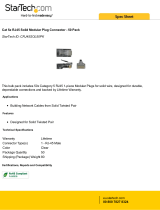 StarTech.com CRJ45SOL50PK Datasheet
StarTech.com CRJ45SOL50PK Datasheet
-
Toshiba AR-B1375 User manual
-
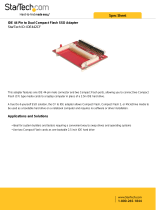 StarTech.com IDE442CF Datasheet
StarTech.com IDE442CF Datasheet
-
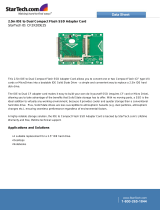 StarTech.com CF2X2IDE25 Datasheet
StarTech.com CF2X2IDE25 Datasheet
-
luminii STENOS 3, 5, 12 inch Directional Module Installation guide
-
Ampro Corporation P5X User manual
-
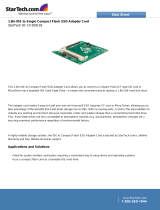 StarTech.com CF2IDE18 Datasheet
StarTech.com CF2IDE18 Datasheet
-
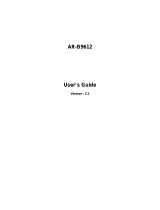 Acrosser Technology AR-B9612 Owner's manual
Acrosser Technology AR-B9612 Owner's manual
-
ADLINK Technology M-855 Specification


























































































































